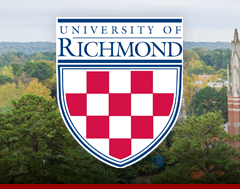Off-campus University of Richmond users: To download campus access theses, please use the following link to log in to our proxy server with your university username and password.
Date of Award
5-2025
Document Type
Restricted Thesis: Campus only access
Degree Name
Bachelor of Science
Department
Biology
First Advisor
Dr. Jonathan Richardson
Second Advisor
Dr. Colleen Carpenter-Swanson
Abstract
Leptospirosis is the most prevalent zoonotic disease worldwide, with over one million cases globally and close to 60,000 deaths attributed to the disease each year. Leptospirosis is caused by the spirochete Leptospira interogans bacteria. One of the most important reservoir hosts of the bacteria are rats in the genus Rattus, including Rattus norvegicus, which is commonly known as the Norway rat. As global urbanization and rat populations are on the rise, we will likely see an increase in the transmission of rat-borne diseases. We trapped Norway rats (n=158) from 14 different locations in Richmond, Virginia from October, 2020 to December, 2024. We found that 20.8% of the rats were infected with Leptospira bacteria, with larger rats having higher infection rates. In our analysis of social determinants of health, we found a weak positive relationship between the site-specific Leptospira positivity and urbanization levels and social vulnerability index. We did find a marginally statistically significant relationship between site specific positivity rate and median household income. The results of this study should guide the implementation of citywide Leptospira monitoring initiatives aimed at protecting community health. Further research is needed to clarify environmental and socioeconomic drivers of infection and to design proactive, data-informed public health responses.
Recommended Citation
Wood, Lydia, "Leptospirosis Infection Risk Posed by Urban Rats Living in Richmond" (2025). Honors Theses. 1867.
https://scholarship.richmond.edu/honors-theses/1867
